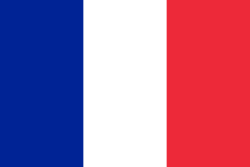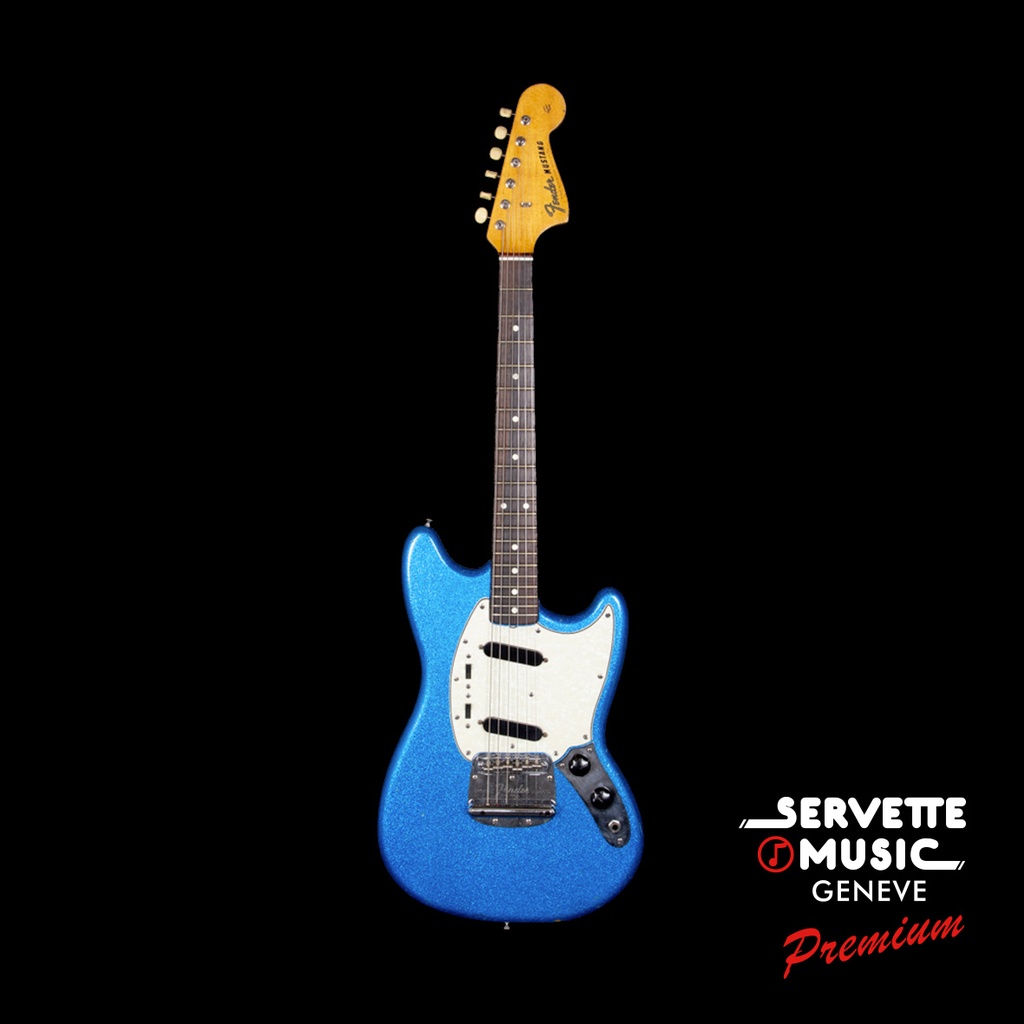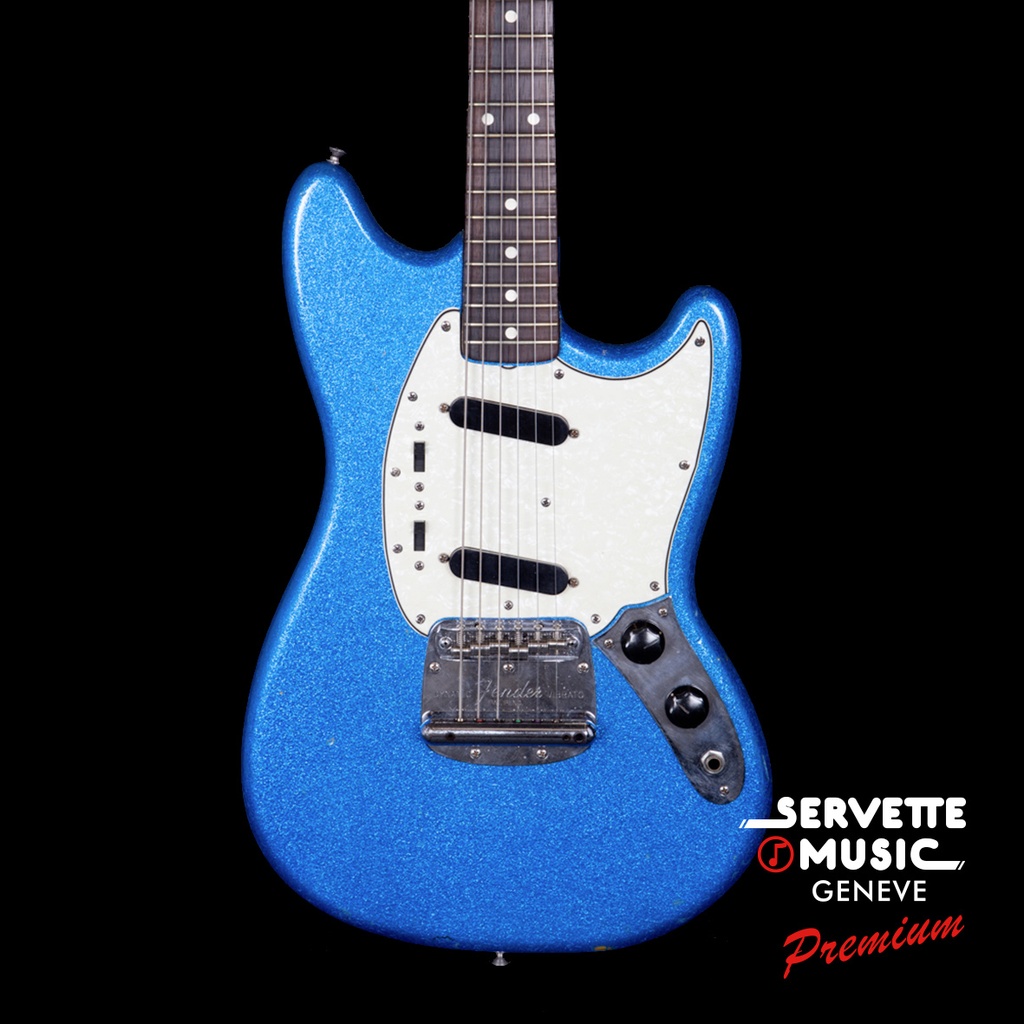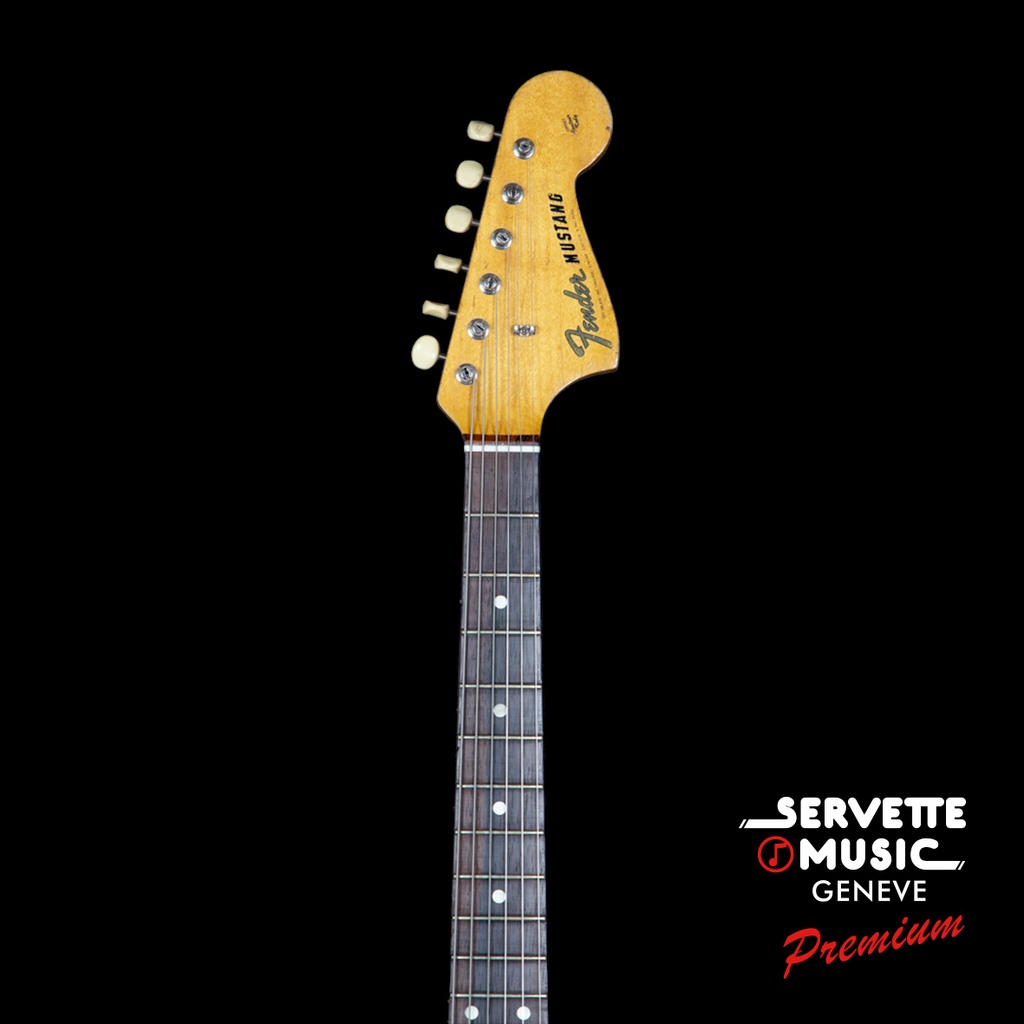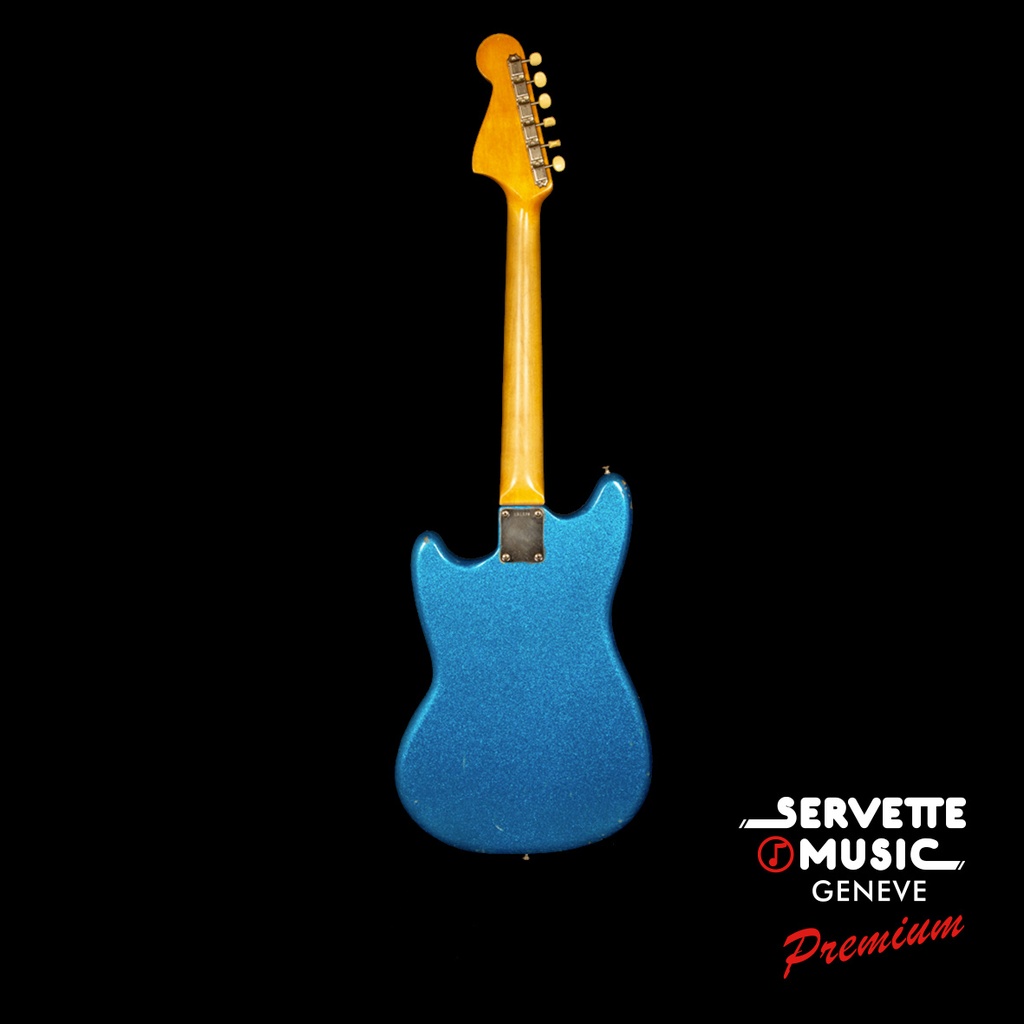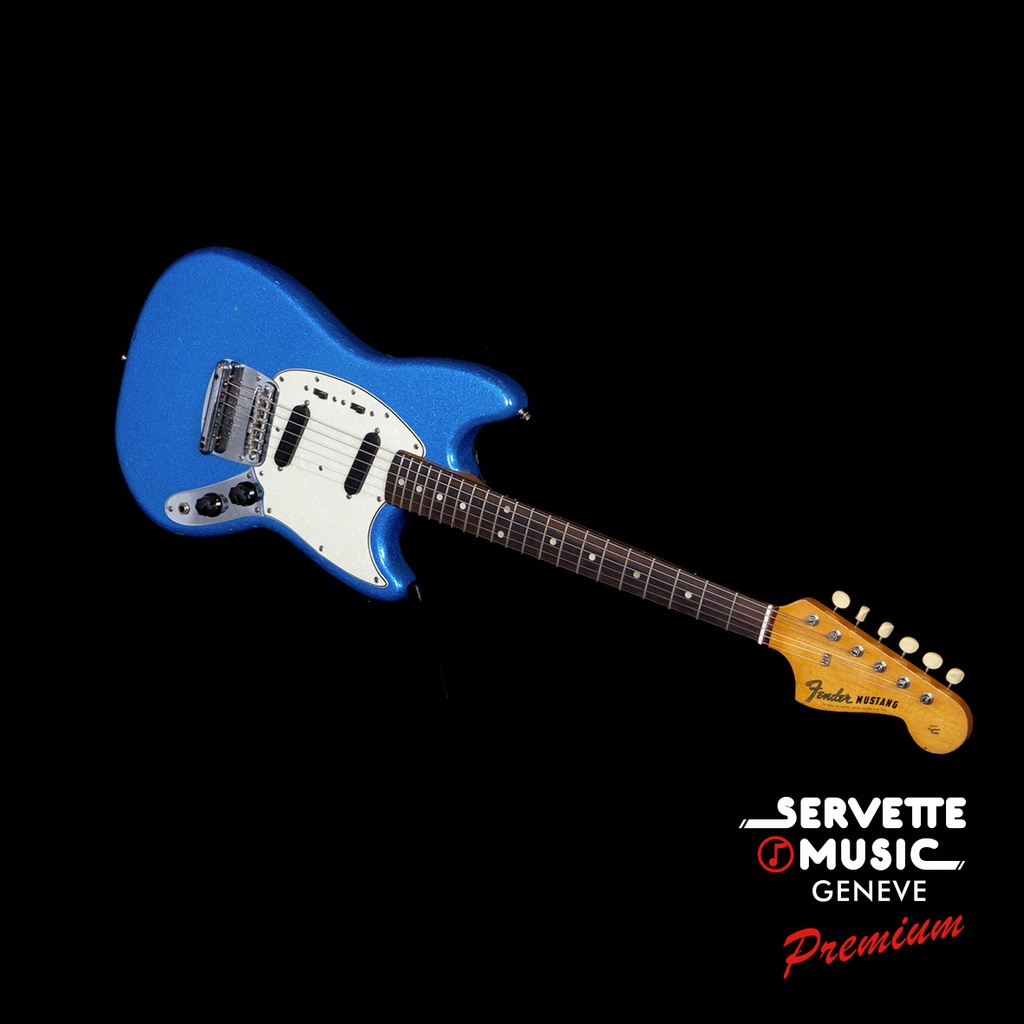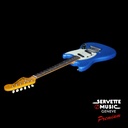Fender Mustang model electric solid body guitar. Serial Nr L51376 (stamped on the neck plate) indicates end of 1964. The inked stamp at the neck’s end is 9DEC64A, 9 being the model’s code (Mustang), A the nut width (1’’ ½). The brazilian rosewood fingerboard bears pearloid dots inlays. Tunes are plastic buttons Kluson Deluxe , stamped “KLUSON DELUXE” on two lines, D169400 patent Nr stamped on the tuners bottom. Frets are original and in very good condition, considering the instrument’s age.
Bridge pickup bears a yellow inked stamp reading AY Feb 1965 on the top plate. Though not easy readable, neck pickups has hand written date 01 22 65 on its bottom plate. Volume potentiometer is dated April 1965, tone potentiometer December 1964. All the wiring solder joints appear to be original. The date gap between the different datable parts date is consistent with production manufacturer processes at these times.
Except for the bone nut, which appears to be new, and a screw hole, remaining of a the temporary installation of a strap button on the right side body horn, (which indicates that this instrument has likely been set up for a left handed player at one time, which would be the reason why the nut has been replaced) this guitar doesn’t show any evidence of repair or modification in any way. Every other parts (bridge, tremolo, control plate, output jack, volume and tone knobs, potentiometers, pickup selectors, pearloid celluloid pickguard, strap buttons and screw) are consistent with the model and its manufacturing era.
This instrument shows an important particularity : its body is painted in “Sparkle Blue” finish. This color, although not figuring on the official Custom Colors charts published by Fender at the time, has been applied however, as well as other sparkle colors of the same kind, on very rare occasions, mostly at the beginning of the sixties. After thorough and careful examination, no traces or remaining of other finish or color has been found anywhere on this guitar. Shielding metal sheets in the body cavities show no evidence of having been removed and have no paint on them. Blue Sparkle paint is found at the bottom of cavities without shielding metal sheets. One can not find any evidence of paint having been stripped or sanding traces. The finish shows checking typical of this era, as well as normal wear and minor damages, expected to be found on an instrument of this age.
It should also be noted that, first, when it is not uncommon for these kind of instrument to have been refinished in the past in sometimes fanciful finish, due to their low value, those works weren’t done with great care. Second, engaging the resources needed to make a credible fake with an instrument of modest value wouldn’t make much sense. For these reasons above, one can reasonably conclude that this extremely rare finish is original.
Additional pictures on request. 1 year warranty on 2nd hand instruments.



